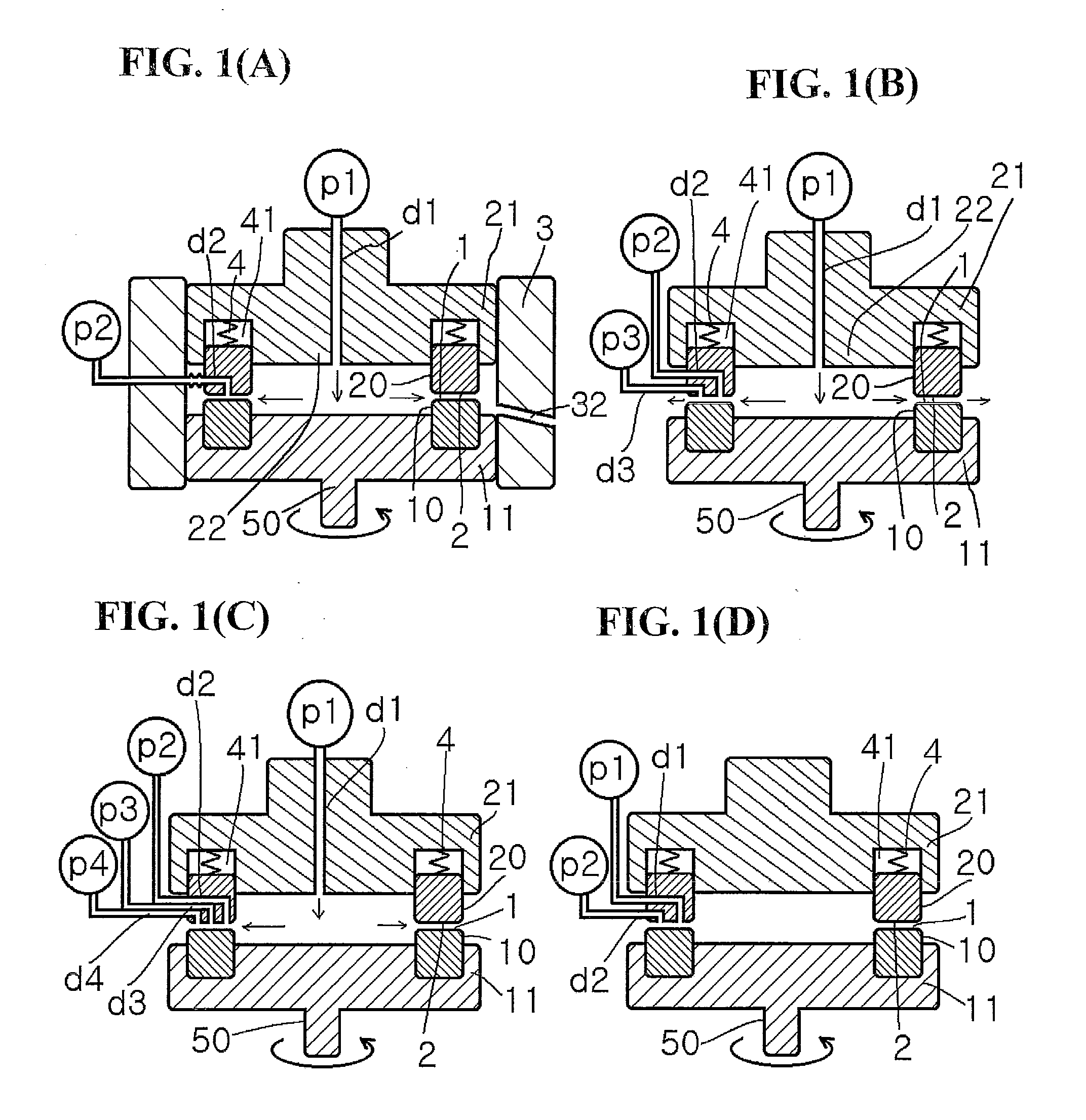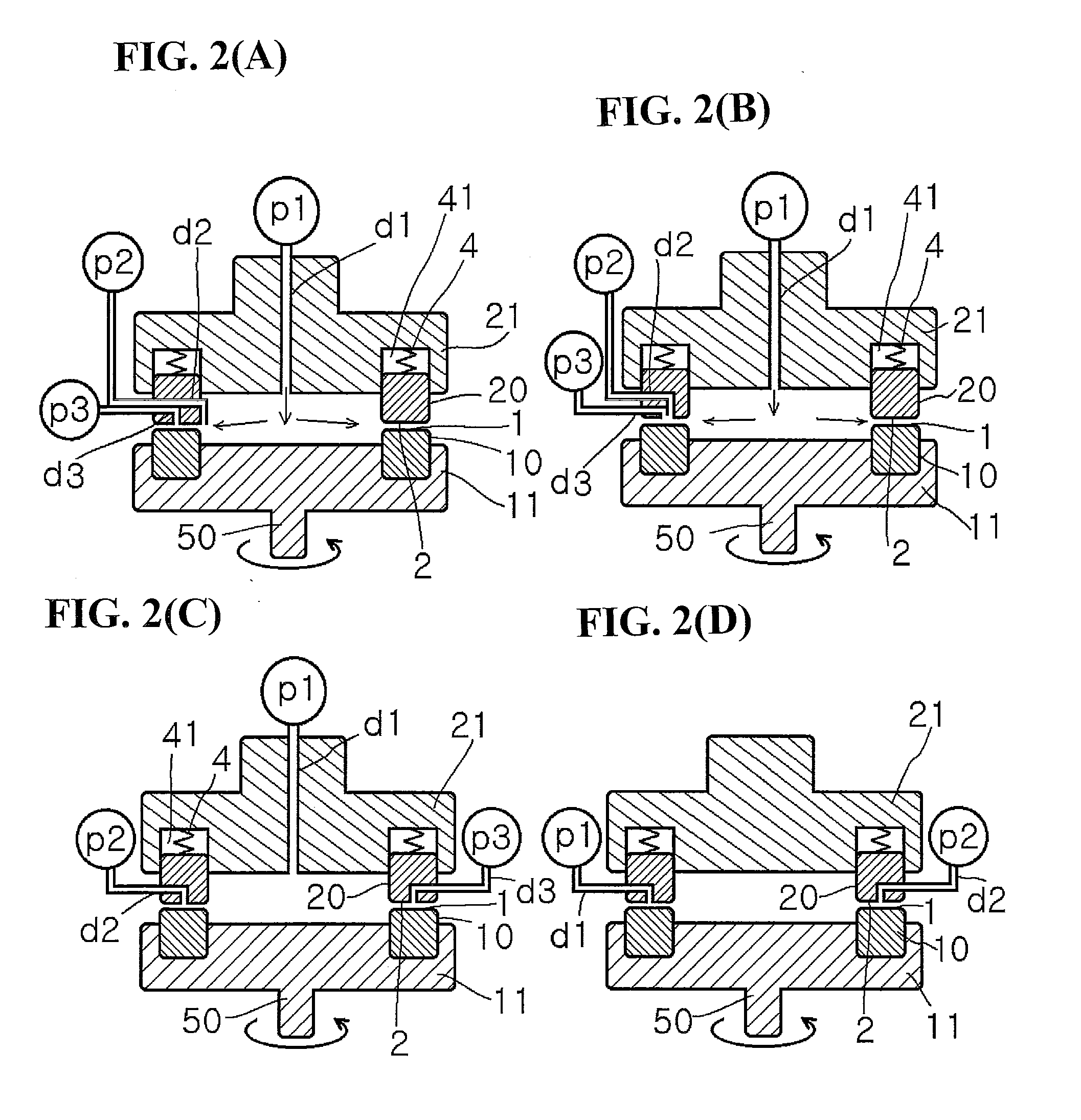Method for producing metal microparticles, and metal colloidal solution containing the metal microparticles
a technology of metal microparticles and colloidal solution, which is applied in the direction of electrolytic organic production, instruments, conductors, etc., can solve the problems of difficult temperature control, difficult to conduct a uniform reaction, and difficult concentration control, so as to achieve continuous and efficient production, high production efficiency, and the effect of increasing in siz
- Summary
- Abstract
- Description
- Claims
- Application Information
AI Technical Summary
Benefits of technology
Problems solved by technology
Method used
Image
Examples
example 1
[0397]While 10% hydrazine aqueous solution was sent as a first fluid from the center at a supply pressure / back pressure of 0.02 MPa / 0.01 MPa, at a revolution number of 1000 rpm and at a sending solution temperature of 80° C., an aqueous solution of 20% silver nitrate / 2% polyvinyl pyrrolidone (molecular weight 20000), just after adjusted to pH 12 with ammonia water, was introduced at a rate of 10 ml / min. as a second fluid into the space between the processing surfaces 1 and 2. An aqueous colloidal silver solution having yellow plasmon absorption was discharged from the processing surfaces 1 and 2. A further discharged solution even when stored in a glass container did not show a silver mirror reaction without forming a film of silver on the wall surface of the container.
[0398]Then, the operation of centrifuging the obtained colloidal silver solution to remove impurities lighter than silver microparticles was repeatedly conducted, then the silver microparticles were washed with purifi...
example 2
[0399]While 10% hydrazine aqueous solution was sent as a first fluid from the center at a supply pressure / back pressure of 0.10 MPa / 0.01 MPa, at a revolution number of 2000 rpm and at a sending solution temperature of 80° C., an aqueous solution of 20% silver nitrate / 2% polyvinyl pyrrolidone (molecular weight 20000), just after adjusted to pH 12 with ammonia water, was introduced at a rate of 10 ml / min. as a second fluid into the space between the processing surfaces 1 and 2. An aqueous colloidal silver solution having yellow plasmon absorption was discharged from the processing surfaces 1 and 2. A further discharged solution even when stored in a glass container did not show a silver mirror reaction without forming a film of silver on the wall surface of the container.
[0400]Then, the operation of centrifuging the obtained colloidal silver solution to remove impurities lighter than silver microparticles was repeatedly conducted, then the silver microparticles were washed with purifi...
example 3
[0401]While 10% dimethylaminoethanol (DMAE) aqueous solution was sent as a first fluid from the center at a supply pressure / back pressure of 0.02 MPa / 0.02 MPa, at a revolution number of 1000 rpm and at a sending solution temperature of 80° C., an aqueous solution of 20% silver nitrate / 2% BYK-190 (manufactured by BYK-Chemie), just after adjusted to pH 12 with ammonia water, was introduced at a rate of 10 ml / min. as a second fluid into the space between the processing surfaces 1 and 2. An aqueous colloidal silver solution having yellow plasmon absorption was discharged from the processing surfaces 1 and 2. A further discharged solution even when stored in a glass container did not show a silver mirror reaction without forming a film of silver on the wall surface of the container.
[0402]Then, the operation of centrifuging the obtained colloidal silver solution to remove impurities lighter than silver microparticles was repeatedly conducted, then the silver microparticles were washed wit...
PUM
| Property | Measurement | Unit |
|---|---|---|
| Fraction | aaaaa | aaaaa |
| Fraction | aaaaa | aaaaa |
| Fraction | aaaaa | aaaaa |
Abstract
Description
Claims
Application Information
 Login to View More
Login to View More - R&D
- Intellectual Property
- Life Sciences
- Materials
- Tech Scout
- Unparalleled Data Quality
- Higher Quality Content
- 60% Fewer Hallucinations
Browse by: Latest US Patents, China's latest patents, Technical Efficacy Thesaurus, Application Domain, Technology Topic, Popular Technical Reports.
© 2025 PatSnap. All rights reserved.Legal|Privacy policy|Modern Slavery Act Transparency Statement|Sitemap|About US| Contact US: help@patsnap.com



